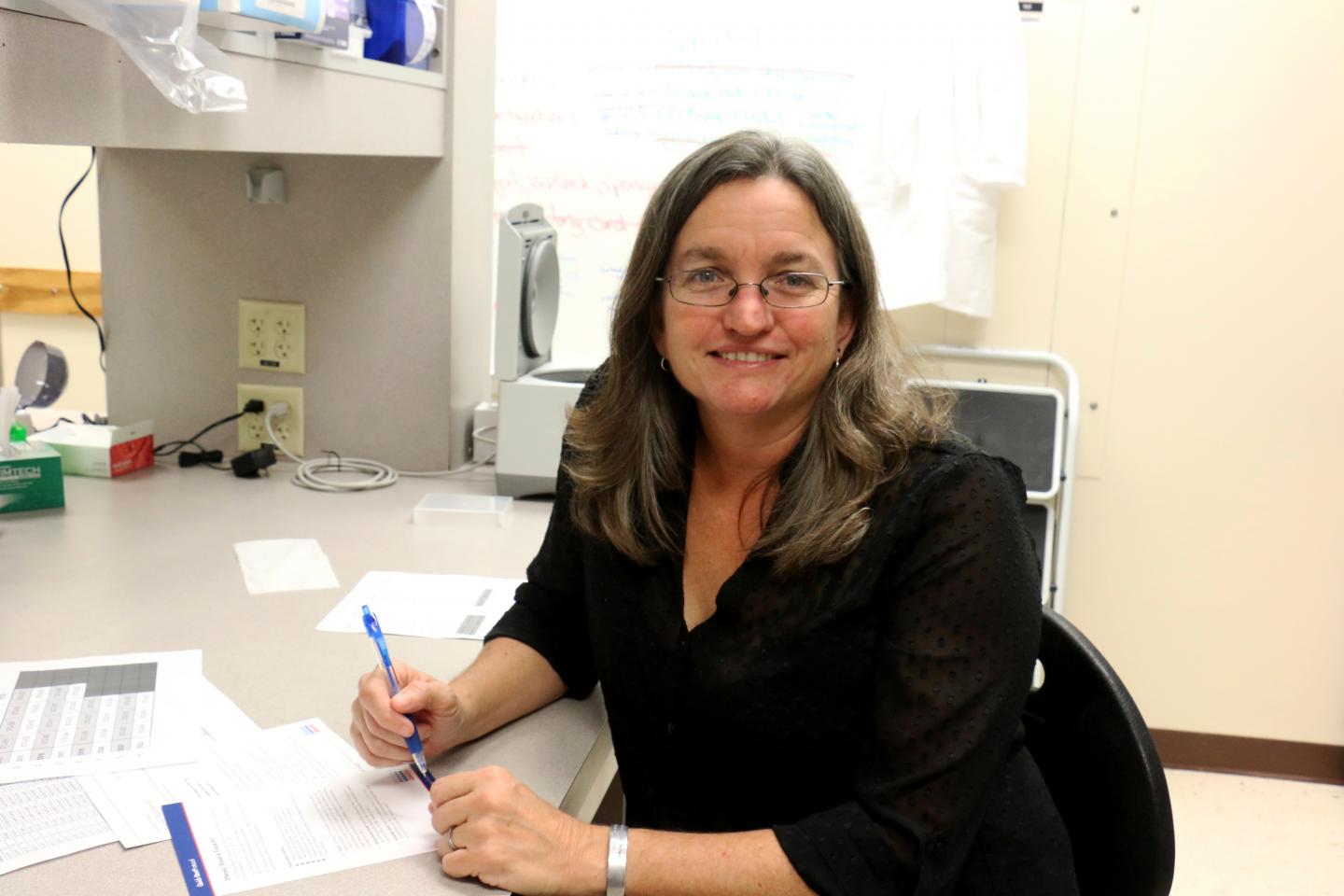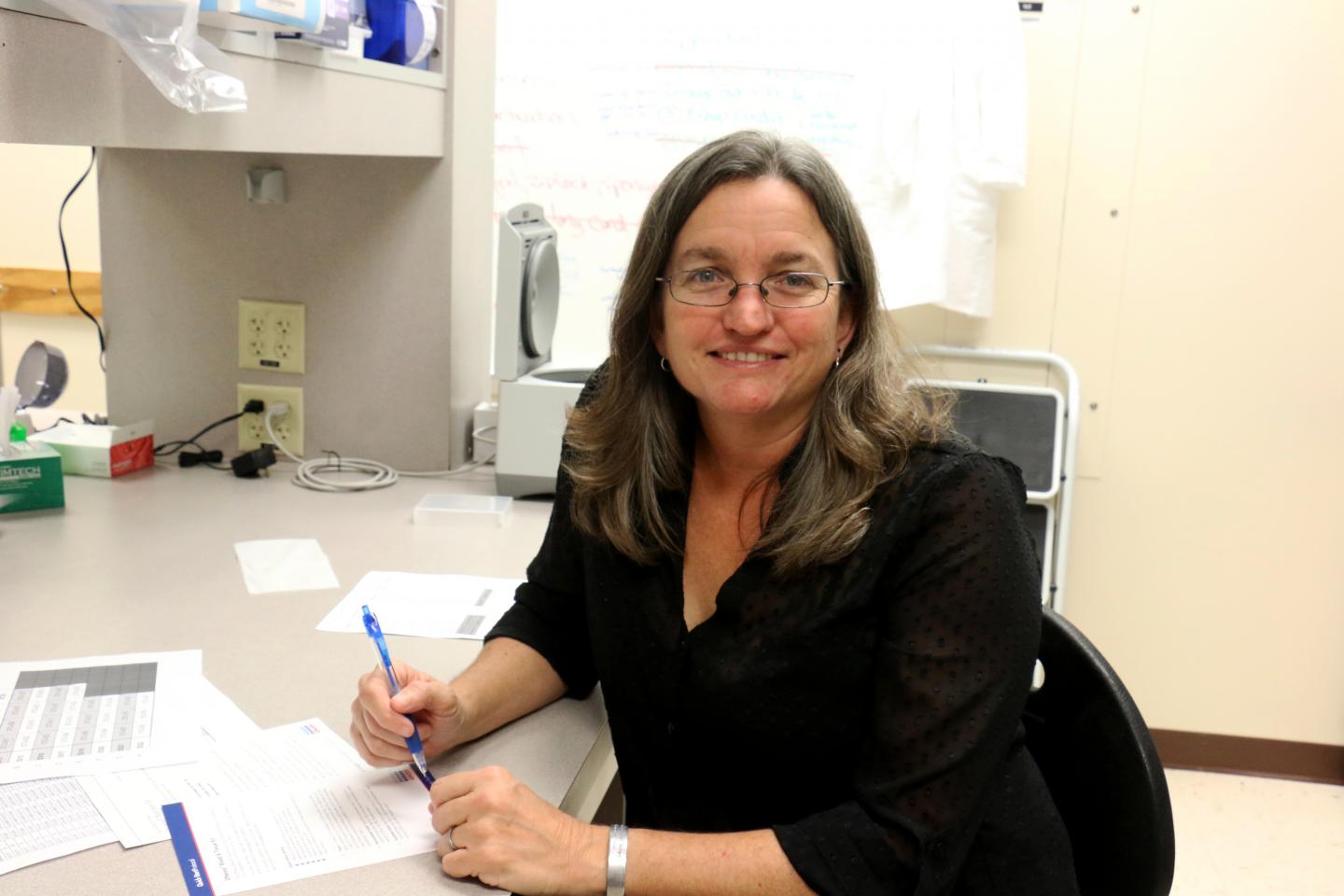
Credit: University of Central Florida
A group of international scientists, including a University of Central Florida biologist, recently discovered that a species of fish living in the north Atlantic Ocean has an ability to adapt to changing environmental conditions that are linked to the depth of its watery habitat.
The unknown mechanism, which gives the roundnose grenadier its "super power," appears to be coded into the species' genetics.
Findings of the team's study are published this week in the journal Nature Ecology & Evolution. The work was conducted at Durham University in the United Kingdom in collaboration with a team of scientists and students from UCF, the University of Liverpool and Marine Scotland.
Often when people think of the ocean they think only of species living near the surface such as corals and reef fishes. Part of what makes this species so interesting to researchers is its vast vertical habitat, which can range from 590 to 8,500 feet (180 to 2,600 meters) below the surface.
"The ocean environment varies greatly between 200 and 2,600 meters including available food and light and water temperature," said UCF Biologist Michelle Gaither. "What is really cool about this project is that we were able to use a new genetic tool to look at the differences between populations over just 1,000 meters of depth."
Figuring out how fish evolve and adapt, especially in such vast environments, is important to understanding biodiversity and is important to conservation efforts.
In order to conserve species, scientists must understand how biodiversity originates and where we are most likely to find novel species and genotypes. Studying the genomes of this fish is just the beginning to unlocking the mystery of how biodiversity is arranged in the ocean.
"If you're going to regulate a fishery, you can't just say OK – let's regulate it. Scientists need to consider where the species they're trying to protect lives," Gaither said. "For this species, you can't just say no fishing below 1,200 meters because now we know that genetic diversity differs across the whole vertical range and you have to protect the whole slope."
Once the team decoded the genome for the roundnose grenadier, they found that fish carried different genotypes depending upon at what depth they lived. For example, fish that lived at 1,800 meters were fixed for certain genes while those living closer to the surface had mixed genotypes, but they are all the same species.
"We can roughly predict the fish's genotype based on where it lives, but the functions of these genes don't tell the full story yet, it just shows us that there are some specializations involved at living in deeper depths," Gaither said. "The individuals with those genes succeed living deeper in the ocean while other individuals with different genotypes do not."
The researchers also know the fish don't exclusively mate with individuals of their own genotype and when they do mate, it's very likely they gather into groups called spawning aggregations where they release sperm and eggs into the water column. The fertilized eggs, and later the larvae, float around on the ocean currents for several weeks before all settling onto the ocean bottom. This furthers the mystery of how fish seek out and live at their perspective depths.
"All the fish larvae settle out around 1,200 meters, regardless of genotype and somehow they sort out by depth as they grow and mature," Gaither said.
As it stands now, this fish is only one species, but if conditions change, it could evolve into more. That's where Gaither's appointment in UCF's Genomics and Bioinformatics Cluster is key. Her work with computer scientists is tapping into new scientific territory to better understand evolution.
"As biologists, this type of research helps us understand how biodiversity evolves and how it's generated," Gaither said. "Genomics has given us the tools to begin to truly understand how evolution works and to better protect life on Planet Earth."
###
Gaither came to UCF in December 2017 from the University of Hawaii at Manoa and holds a Ph.D. in Zoology.
Media Contact
Zenaida Gonzalez Kotala
[email protected]
407-823-6120
@UCF
http://www.ucf.edu





